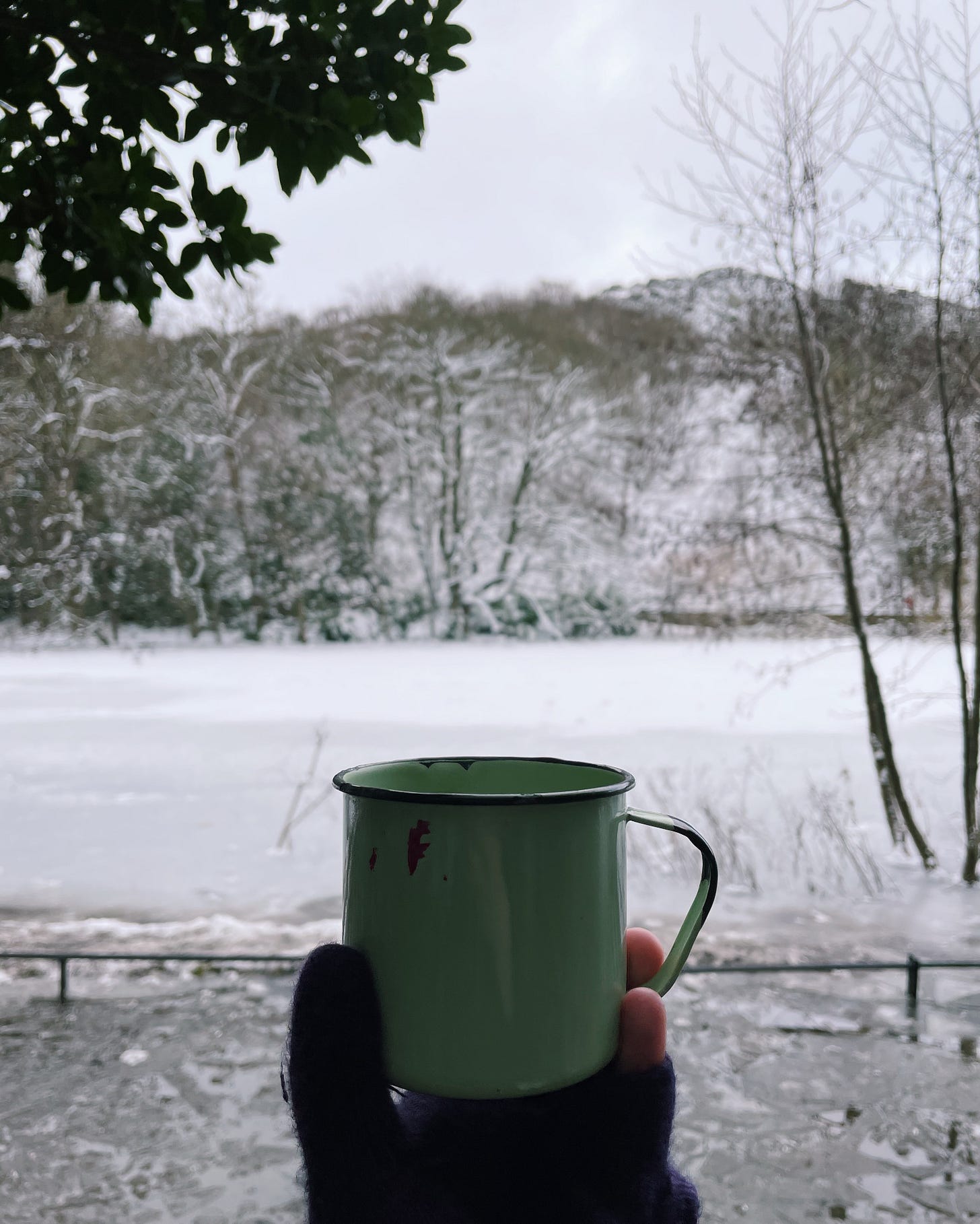December Nature Notes to Notice (Part Two)
With the world weighing heavy this week and work busier than ever, I’m leaning into my grounding daily walks. Taking the time to slow down, notice my surroundings and connect with the senses and with nature - even briefly on my commute to work - makes a real difference to my days. I find this practice incredibly powerful; although it doesn’t always slow my whirring mind for good, it certainly helps to reframe things - a reminder of small joys and that we are part of wider nature. When I feel my mind wandering, I gently bring it back to the moment and engage all my senses.
Feeling the ground beneath my feet, frosty leaves crunching. Hearing the sounds of the geese flying low overhead. Breathing in the scent of woodsmoke, lingering in the cold air. Watching the sunrise emerge slowly over the Pentland Hills: shades of dusky lilac and powder pink this morning. Between my morning mindfulness and peeking in windows along my way Christmas tree spotting, making a conscious effort to connect offers a calmer start to the day. Focussing on those small joys in nature helps me gain perspective.
I hope you enjoyed part one of this month’s nature notes, which you can read here if you missed them! Without further ado, here are some more things to look out for this month - in the sky and on water this time.
Sky
Robins are most strongly associated with this month of the year and are probably the easiest to spot thanks to their red plumage, which is more abundant in winter, and appetite for worms in woodlands and gardens. Their song is used to mark their territory so be mindful about disturbing your garden visitors. Rooks and crows can also be seen roosting in woodlands at this time of year, visible among the bare branches.
Owls can be tricky to spot, but the short-eared owl hunts in the daytime – unlike the more famous barn or tawny owls. They can be seen above marshes, where they hunt small animals. Other owls, such as the tawny owl, can be heard if not seen – they’re noisiest in December! Listen out for their distinctive twit-twoo on walks at dawn or dusk. The sound is actually a call and response between male and female, searching for their mate for life.
Water
Grey seals and their pups can be seen at the coast at this time of year. Winter doesn’t seem the ideal time to be giving birth, but after a Summer of hunting, females have enough reserves to produce the amount of milk seal pups need to thrive. Look out for the white, fluffy pups on beaches but be sure to keep your distance.
Frogs and toads hibernate at the bottom of ponds or bodies of water at this time of year. The constant low temperatures sustain the low metabolism needed to survive the Winter months. I don’t know about you, but hibernation seems pretty tempting about now…






